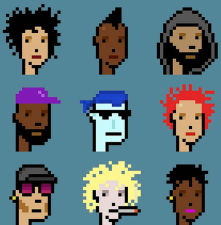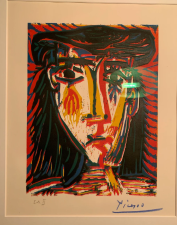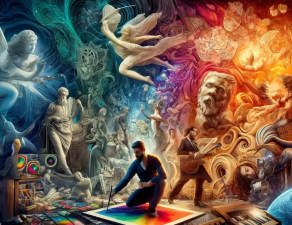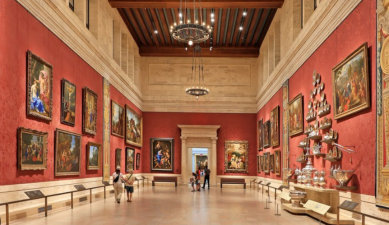NFT Art Is Fading, but Physical Art Collecting Is Rising
In the future, humanity may face a dual world: the coexistence of the real world and the virtual world. Given the rapid development of virtual world technology, we may need to prepare for and adapt to the challenges of this new environment. The development of the NFT market is particularly noteworthy. As an early product of the virtual world, this market has rapidly grown, and its market size is expected to surpass that of the traditional art market.
In the future, humanity may face a dual world: the coexistence of the real world and the virtual world. Given the rapid development of virtual world technology, we may need to prepare for and adapt to the challenges of this new environment. The development of the NFT market is particularly noteworthy. As an early product of the virtual world, this market has rapidly grown, and its market size is expected to surpass that of the traditional art market.
What is NFT?
NFTs (non-fungible tokens) are blockchain-based digital assets. Fungibility means that all assets follow the same rules and can be freely divided and exchanged, such as the familiar Bitcoin and Ethereum. A Bitcoin in your hand is no different from a Bitcoin in my hand. Non-fungibility, on the other hand, means that it is unique, indivisible, and irreplaceable. Its key innovation is that it provides a method to mark ownership of native digital assets and constitutes a unique proof of authenticity.
Digital files can be easily copied, while NFTs act like an immutable certificate of ownership and authenticity stored on the blockchain, effectively proving the sole ownership of a digital file. It provides a secure and highly liquid medium for financial transactions while guaranteeing the uniqueness and scarcity of traded items. It can be anchored in real-world contexts such as artwork, games, music, and domain names.

Where did NFTs come from?
- NFTs sparked a craze as early as 2017. At the time, two programmers founded an art project called CryptoPunks and posed a provocative question: could a few lines of code translate into meaningful ownership? They issued 10,000 algorithmically generated punk characters on the Ethereum blockchain. Anyone with an Ethereum wallet could claim them for free, and once all were claimed, they could be freely traded. The idea was described by its creators as a "conceptual leap," and three years later, CryptoPunks is considered the beginning of the current crypto art movement.
- NFTs truly gained widespread public attention with CryptoKitties, the first virtual pet game built on the Ethereum public blockchain. Users with an Ether wallet could buy, breed, and sell virtual cats. Each cat has a unique genome, which determines its appearance and characteristics. Unlike traditional collectibles, players can breed two CryptoKitties to create new cats and unlock rare attributes. The obsession with breeding and trading virtual cats even brought the Ethereum network to a standstill, with virtual pet owners spending tens of thousands of dollars to acquire their desired kitties.
- NFTs were initially used in limited blockchain-based applications. Starting in 2020, with the development of DeFi, the clever integration of NFTs and DeFi has spawned a variety of innovations and experiments. After their official launch in early 2021, NFTs experienced explosive growth.

What are the characteristics of NFT crypto art?
Authenticity:
In the traditional art market, traceability and authenticity verification have always been a major pain point for art collectors. NFT crypto art, to a certain extent, eliminates the possibility of counterfeiting, ensures the transparency of transaction information, and significantly increases trading liquidity. Currently, NFTs are primarily used in digital art. They effectively resolve the issue of ownership of digital artworks, elevating their collectible value to the same level as traditional physical art.
Decentralization:
Powered by blockchain technology, NFT crypto art does not require any third-party issuer, and ownership records are permanently preserved. Artists no longer rely on third-party platforms like galleries and auction houses, enabling direct connections with collectors, making it logically possible for "everyone to be an artist" and "everyone to be a collector." The art world has long been criticized for its opacity, but the emergence of NFTs has instantly dismantled this barrier.
Transferability:
The decentralized nature of NFTs makes the transfer of ownership of works much easier. Artists can use NFT smart contracts to establish a permanent revenue share, ensuring that every resale of their work earns them a commission. In the traditional art market, even if an artist's work sells for hundreds of millions of dollars at auction, it often has little to do with the artist.









